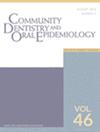The Political Determinants of Oral Health Inequalities: Lessons in Policy Development and Implementation From Six Case Studies
Abstract
Objectives
Oral diseases are the most prevalent diseases globally, affecting almost half of the world's population with a disproportionate burden on the most vulnerable groups. Despite growing attention on the social and commercial determinants of health, there is still a largely unexplored area in understanding the political determinants of health and oral health. The aim of this paper is to describe national policy development processes for policies impacting population oral health.
Methods
A multiple case study approach was used to analyse six case studies focused on national policy development processes targeting oral health. Kingdon's Multiple Streams Model was used to examine how problems, policy solutions, and political factors aligned to influence policymaking.
Results
Some of the most common barriers to policy adoption and implementation were misinformation strategies, legal challenges, industry lobbying, ideological opposition to state intervention, and lack of transparency regarding conflicts of interest. Important common facilitators included robust scientific evidence presented in an accessible manner to the appropriate audiences, identification of key decision-makers, support from parties from across the political spectrum, intersectoral collaboration, and ongoing policy monitoring and evaluation.
Conclusions
This study provides novel insights into how political determinants influence social and commercial determinants of health, demonstrating how political contexts and power dynamics shape national public health policy development processes. Understanding these dynamics is essential for ensuring that evidence-based public health interventions are politically feasible and resilient to opposition from certain private industry and ideological interests. In a time of growing inequalities, neutrality in the face of structural injustice risks entrenching a status quo that favours those with the greatest influence. To address these problems sustainably, public health practitioners must recognise and engage with the political nature of policymaking.


 求助内容:
求助内容: 应助结果提醒方式:
应助结果提醒方式:


